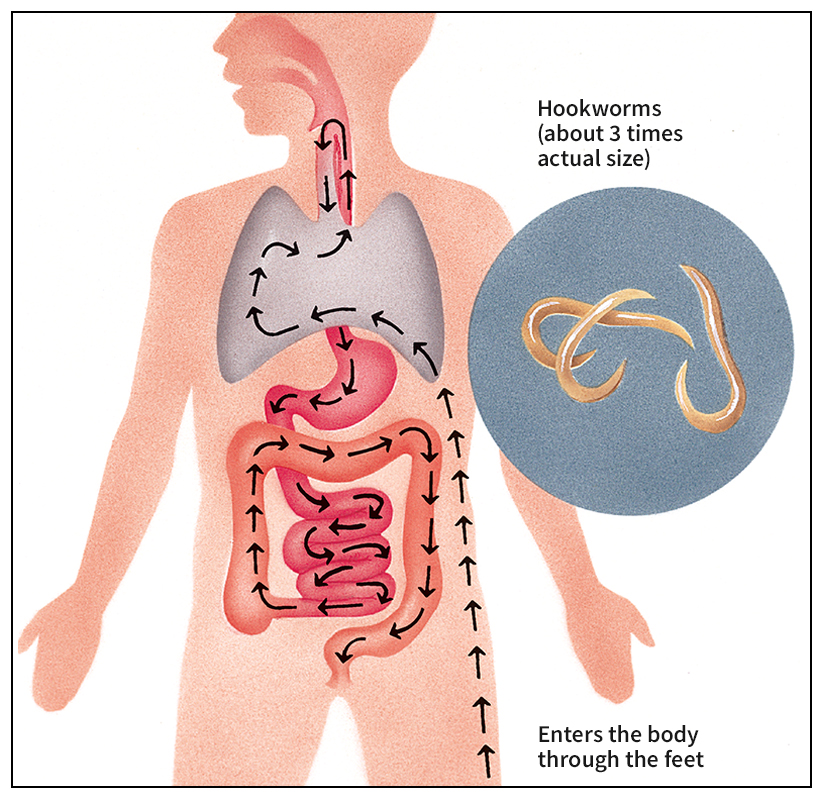Hookworm is a small roundworm that enters the bodies of human beings and some animals through the skin. Hookworms live as parasites in the intestines, sucking up blood and tissue fluids.

Hookworms can cause anemia (a shortage of red blood cells). They harm children more than adults. An infected child becomes weak and pale. The child’s abdomen and legs may swell, and the child may become dull and listless. Certain hookworms attack animals, including cats and dogs. These hookworms can cause an itchy, red patch on human skin called creeping eruption.
Hookworm eggs pass out of the host (body in which the worm lives) with the body waste and hatch in moist, warm soil. The larvae (young worms) come to the surface of the soil. They burrow into the bare skin of animals that touch them. A person walking barefoot may pick up the worm in this way. A person may also become infected by swallowing impure food or water.
Once in the body, a hookworm enters the bloodstream and is carried to the lungs. The hookworm burrows into air channels there, passes into the throat, and is swallowed into the intestine. When hookworms reach the intestine, they become adults. Serious infections occur when there are more than 100 adult hookworms in the intestine.
Hookworm eggs and larvae can live outside of the host’s body only in warm, moist places. For this reason, hookworm disease is commonly found in tropical and subtropical countries.
Improving conditions of sanitation has reduced the amount of infection by hookworms. Medical treatment with drugs is also used today. Recovery is speeded by eating foods high in protein, vitamins, and iron.
